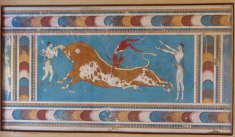Conveners
Mini Workshop on Instruments and Methods in HEP
- Rachid Nouicer (BNL)
Mini Workshop on Instruments and Methods in HEP
- There are no conveners in this block
Mini Workshop on Instruments and Methods in HEP
- Dag Larsen (Jagiellonian University (PL))
The Compact Muon Solenoid (CMS) detector is one of the two multipurpose experiments at the Large Hadron Collider (LHC). It has successfully collected data during Run 1 (2010-2013) allowing to achieve important physics results, like the discovery of the Higgs boson announced in 2012.
Willing to unreveral further open questions not yet explained by the Standard Model, intense activities have...
In order to meet the requirements of the upcoming luminosity upgrade of the LHC, the
Micromegas (MM) technology was selected to be adopted for the New Small Wheel (NSW)
upgrade, dedicated to precision tracking. A large surface of the forward regions of the Muon
Spectrometer will be equipped with 8 layers of MM modules forming a total active area of
1200 m2. The NSW is scheduled to be installed...
Due to the so-called 3He shortage crisis, many detection techniques used nowadays for thermal neutrons are based on alternative converters. Possible ways to increase the detection efficiency for thermal neutrons, using solid neutron-to-charge converters, 10B or 10B4C, implemented the micromegas technology are examined. The micro-pattern gaseous detector Micromegas has been developed for...
We theoretically investigate the possibility of realizing single-photon counters for photon frequencies down to 10 GHz. We propose three schemes. The first one consists of a cold electron nanobolometer, coupled to an antenna, as in Ref. [1]. In this case, the photon excites the antenna and then dissipates its energy into the normal metal island of the nanobolometer. As a consequence, the...
During the LHC Run 2, which started in 2015, the LHC has reached a peak instantaneous luminosity of $2 \cdot 10^{34} cm^{-2}s^{-1}$, i.e. twice the design value. Under these conditions, the online selection of LHC collision events is a real challenge.
The CMS online selection is performed by a two-level trigger system: the Level-1 (L1) Trigger, implemented in custom-designed electronics, and...
The ELI-NP facility (Extreme Light Infrastructure - Nuclear Physics) is the pillar of the European project ELI dedicated to frontier research in nuclear physics. The pillar will comprise two major research instruments: a high power laser system and a very brilliant gamma beam system. The ELI-NP Gamma beam system will deliver an intense gamma beam with unprecedented specifications in terms of...
The LUCID-2 detector is the main online and offline luminosity provider of the ATLAS experiment. It provides over 100 different luminosity measurements from different algorithms for each of the 2808 LHC bunches. LUCID was entirely redesigned in preparation for LHC Run 2: both the detector and the electronics were upgraded in order to cope with the challenging conditions expected at the LHC...
The advent of the permanent magnet materials towards high remnant magnetization in combination with their property to be fully saturated ( magnetic permeability~1.0 ) makes the use of magnets made with these materials very desirable. A brief overview of permanent magnets will be given and we will present designs of magnets made of permanent magnet material to be used in nuclear physics applications.
